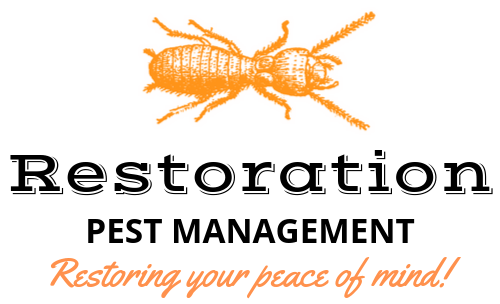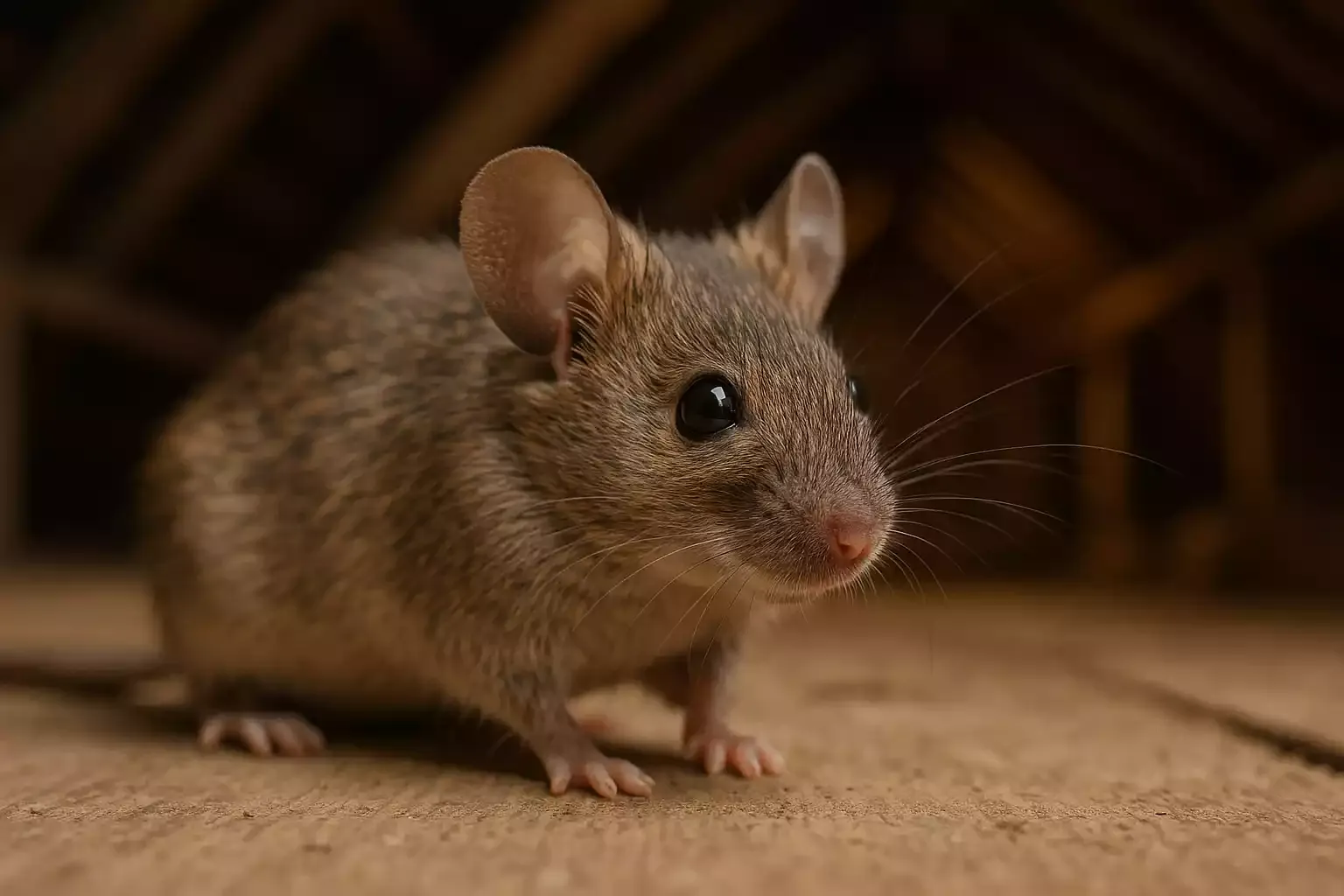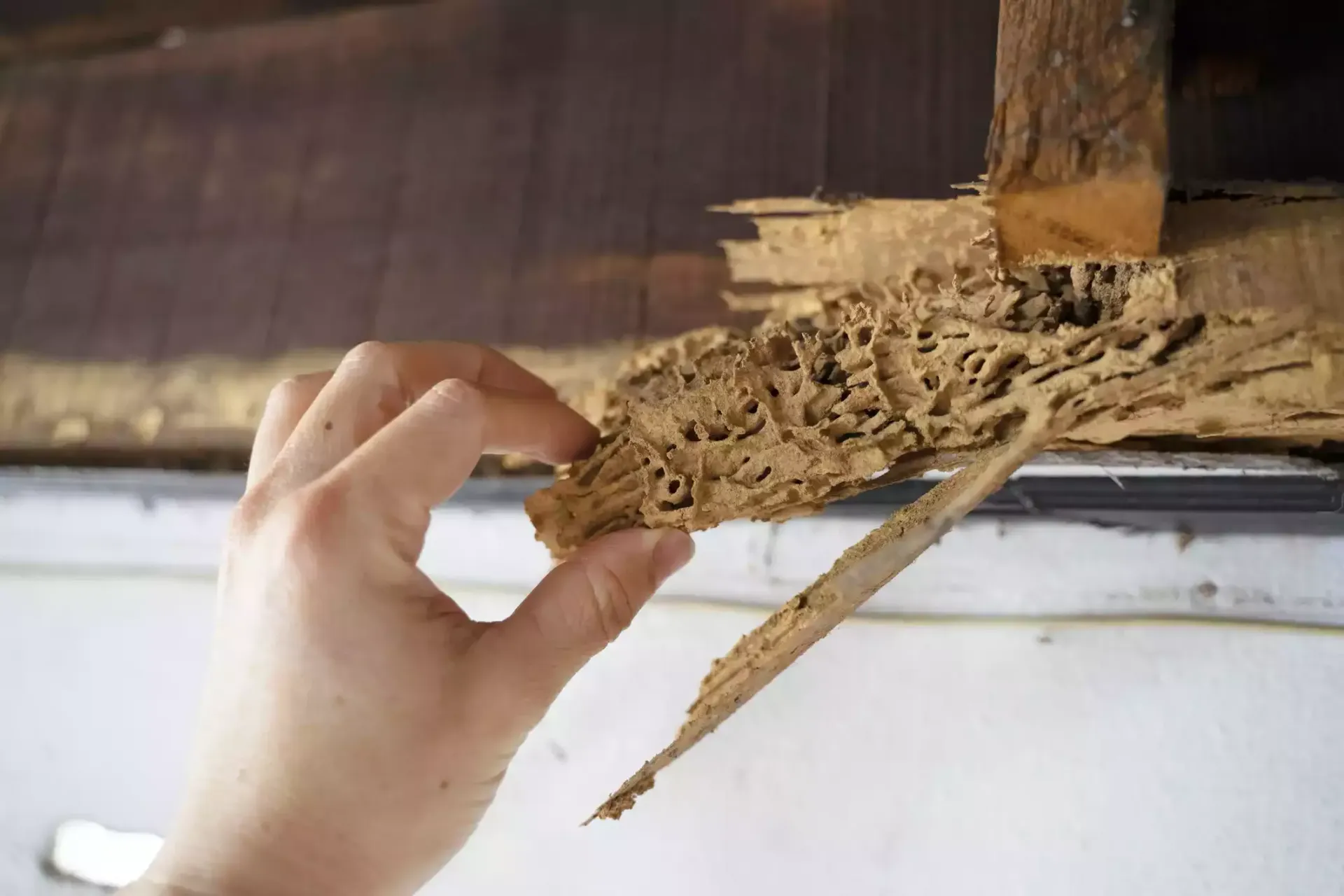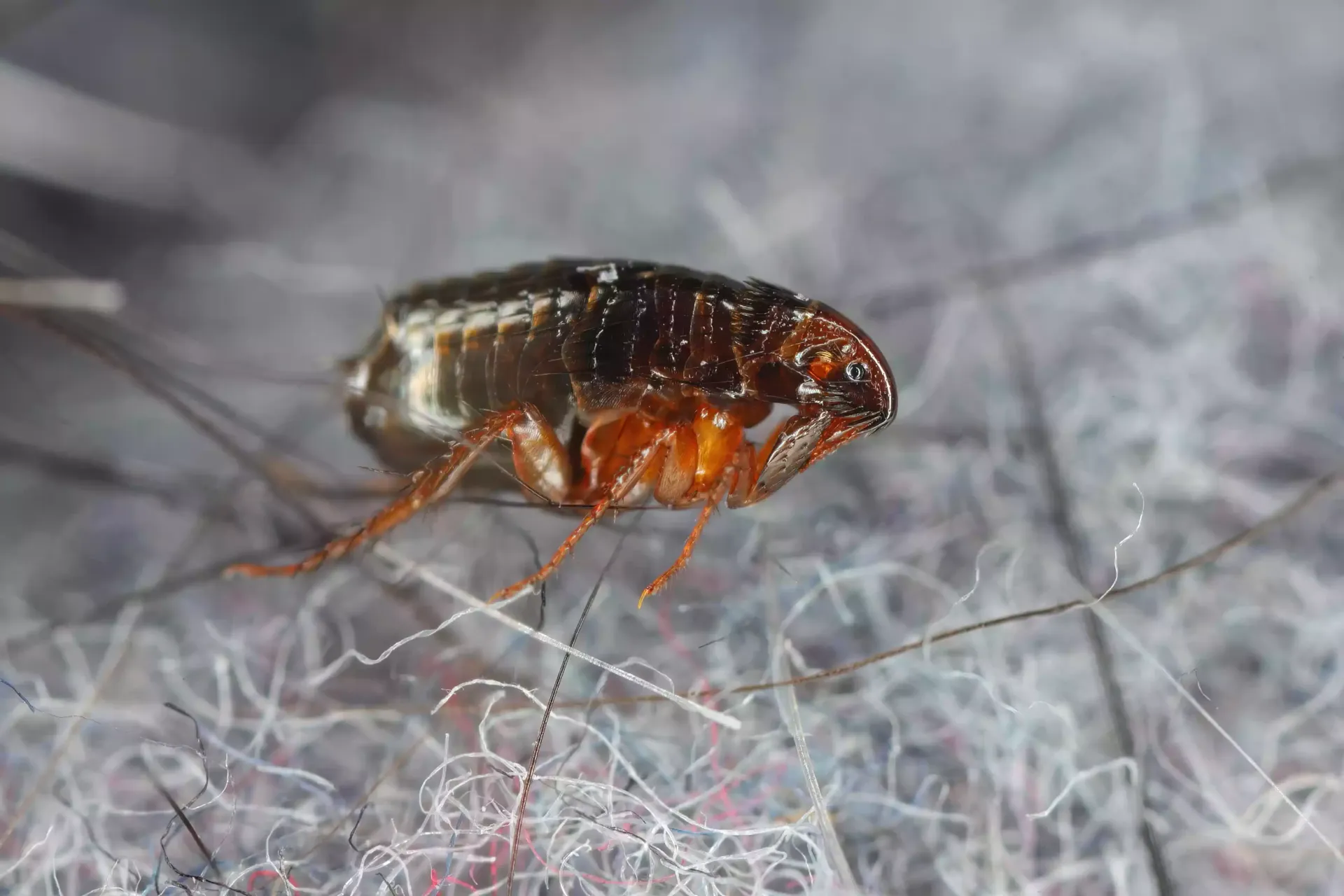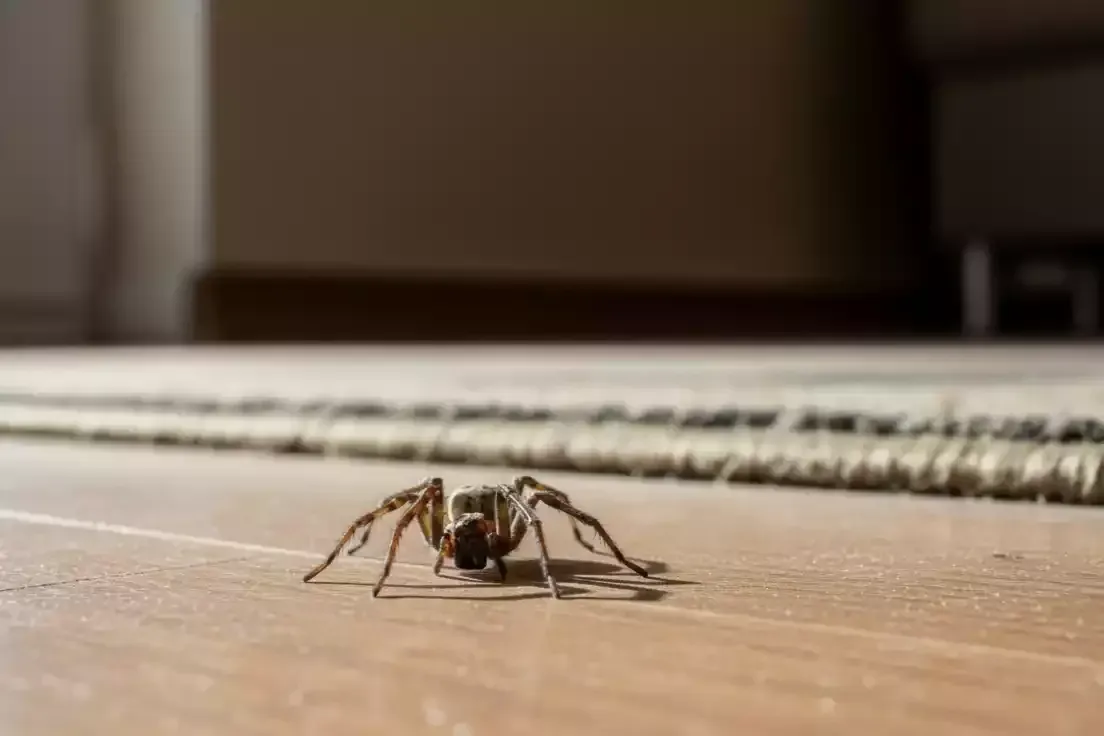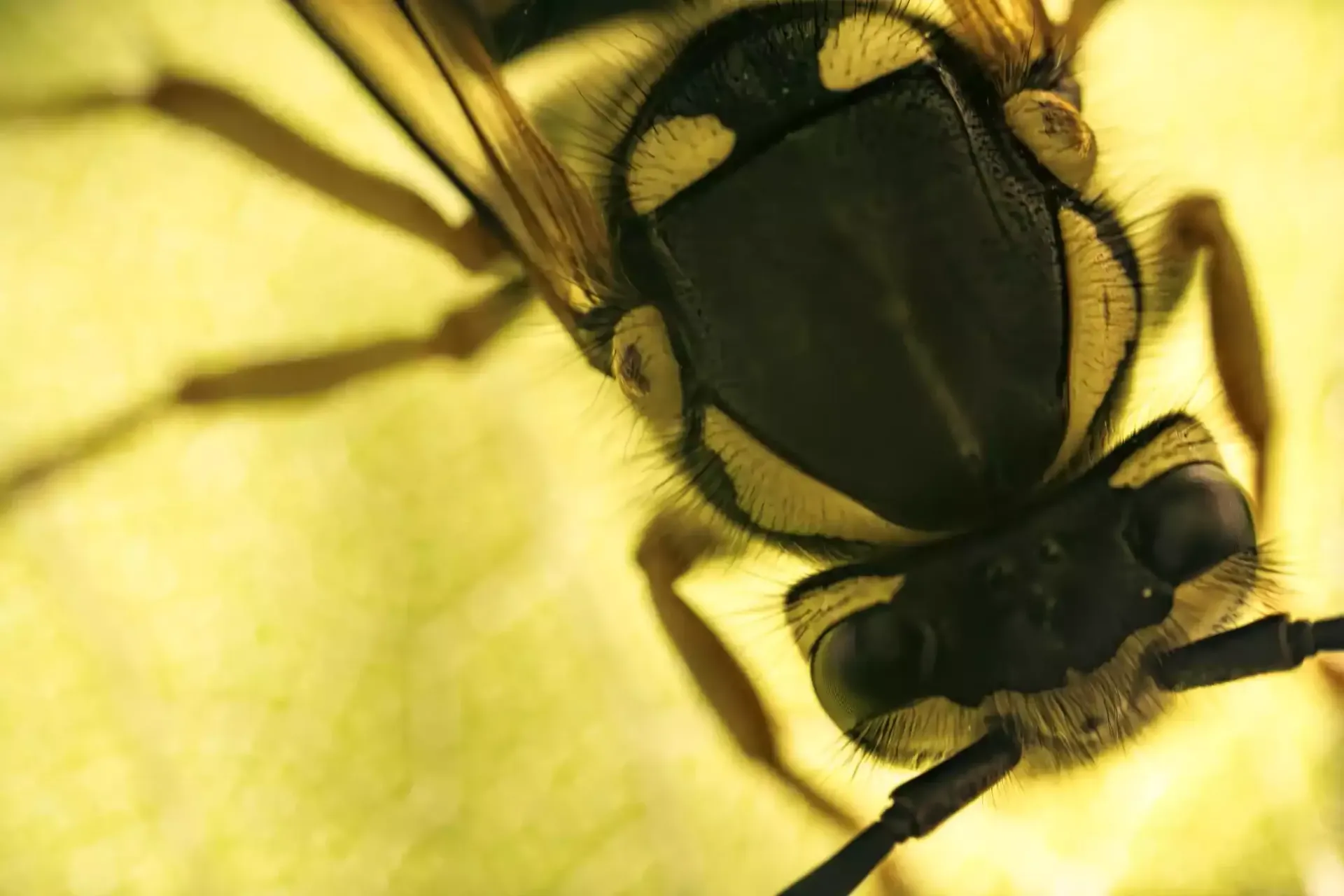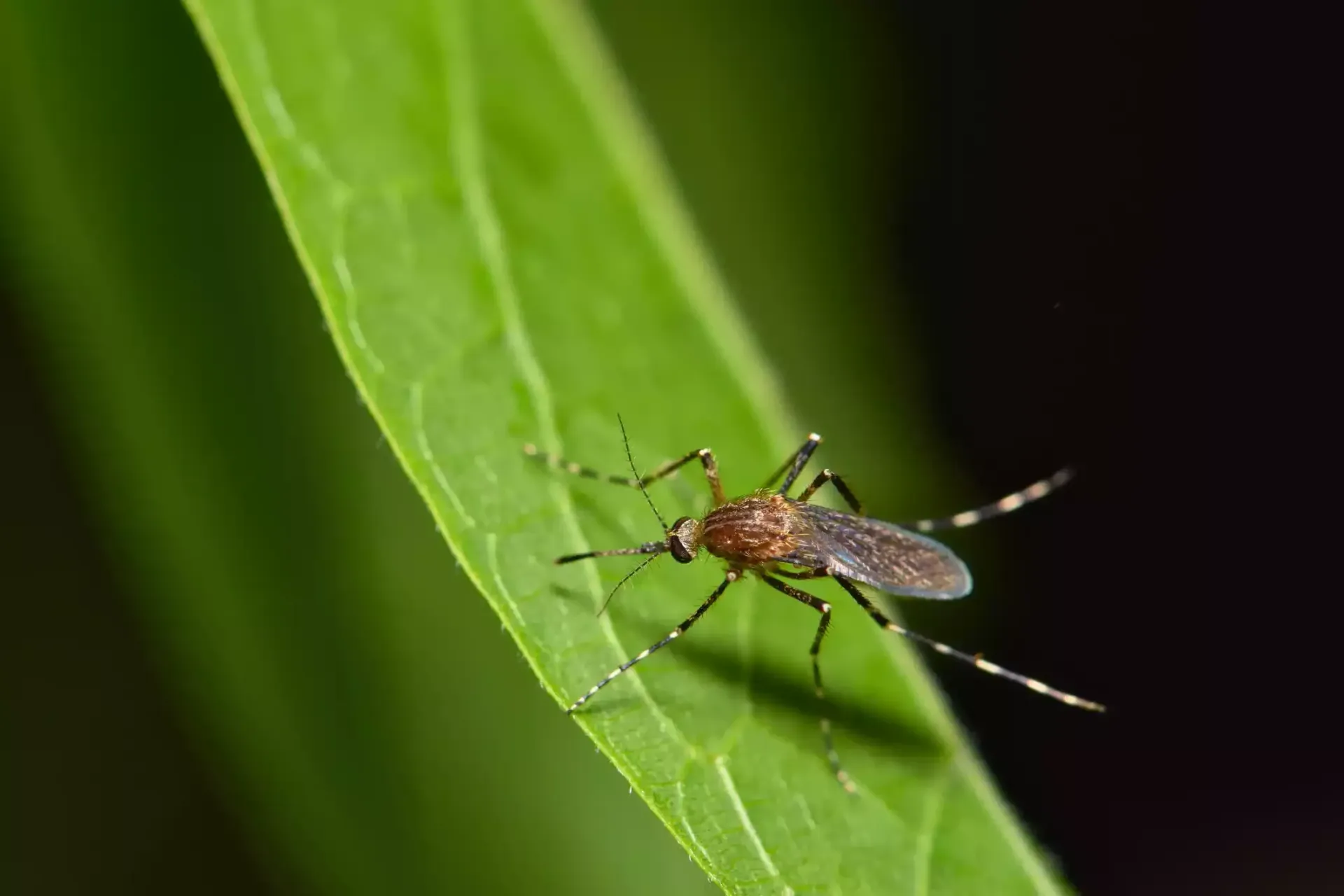Tips For Avoiding Termites
February 26, 2020
Of the approximately 2,000 known termite species, the one thing they have in common is a love for wood. They are a serious threat to home and business owners, causing over $5 billion in property damage annually; damage which is generally not covered by a homeowner's insurance. While standard homeowners' policies cover damages and perils that are sudden or accidental, infestations are considered to be caused by a lack of preventative maintenance and, as such, is the homeowner's responsibility. Columbus ranked #42 in the most termite-infested
cities in the U.S.
Common Termite Species
Eastern Subterranean Termites
By far the most widespread and destructive species in the U.S., they live in underground colonies building mud tubes for safe, sheltered passage. These colonies can expand to live above ground when provided moisture, such as a blocked rain gutter or a leaky pipe. They're preferred foods are softwood and newspapers.
Formosan Termites
Also widespread across the U.S. are the invasive Formosan Termites. Not native to North America, Formosans were likely imported from China or Japan. Larger than other species, they can create massive underground colonies of thousands, devour and destroy large volumes of wood at a rapid rate.
Drywood Termites
Unlike their subterranean cousins, Drywood Termites do not need to be near the soil, nor do they create mud tunnels. Preferring to eat wood with a moisture content below 12%, they establish their nests in roofing materials, wooden support beams, furniture, and hardwood floors. While most prevalent in the southwestern region of the U.S. and Mexico, Drywood Termites can be transported to all corners of the United States via infested furniture and lumber.
Dampwood Termites
Opposite of Drywood species, Dampwood Termites prefer wet, decaying wood like tree stumps or old woodpiles. While not as interested in the drier wood that makes up most homes and buildings, your utility poles, fences, and untreated outbuildings all ring the dinner bell.
- Discolored drywall
- Small, pinholes in drywall
- Squeaky floorboards
- Crumbling, damaged wood molding
- Maze-like damage patterns in furniture or floorboards.
- Mud tubes climbing the foundation of your buildings
- Swarms of flying termite on your property or termite wings discarded after swarms.
Tips for Avoiding Termites
Keep Wood Away From Buildings
Woodpiles stacked against the side of your house keeps it in easy reach during chilly winter months, but it also provides an easy source of food adjacent to warm shelter. The same goes for wood-based products stored in attics or crawlspaces. To minimize risk, stack or store all wood-based products several yards from buildings, and keep the wood elevated off the ground.
Keep Foundations Dry
Like any other living creature, termites need moisture to survive. Improper drainage creates another ideal living condition for these wood munchers. Maintain your downspouts so that they are diverting rainwater away from your home's foundation. Exterior faucets and air-conditioning drip can also cause pooling water, as can gutters clogged with leaf debris, which collects moisture as it decays. All of these issues can create an ideal environment for termite infestations.
Clear Foundations of Mulch
Wood mulch is a simple, inexpensive way to increase the aesthetic value of your home.
Unfortunately, it can also create the perfect ideal living conditions for termite activity. It's best to keep mulch raked away from foundations by at least six inches and to make sure that it never comes in contact with siding, or the framing of doors and windows.
Keep Overhanging Tree Limbs and Bushes Trimmed
Tree branches above your roof, or overgrown bushes against the sides of buildings, create sheltered areas, allows for moisture build-up, and give pests, including termites, an easy path into your home. They can also cause blockages and drainage issues in gutters, which becomes an ideal habitat for an aerial infestation.
Have Professionals Inspect and Treat Your Home
While all of the above steps can make homes and buildings less appealing to termites, the best way to deal with these voracious pests is to hire a trained professional to do an annual inspection. Included is a search for infestations, as well as find and seal any hidden openings that could allow termites to enter. These infestations can go unnoticed for years, and it requires a trained and experienced eye to spot the signs and identify what species are feasting on your property and inside your home.
Treating your home or new property for termites, as a preventive measure, is a wise investment. Contact Restoration Pest Management today and take your property off the lunch menu!
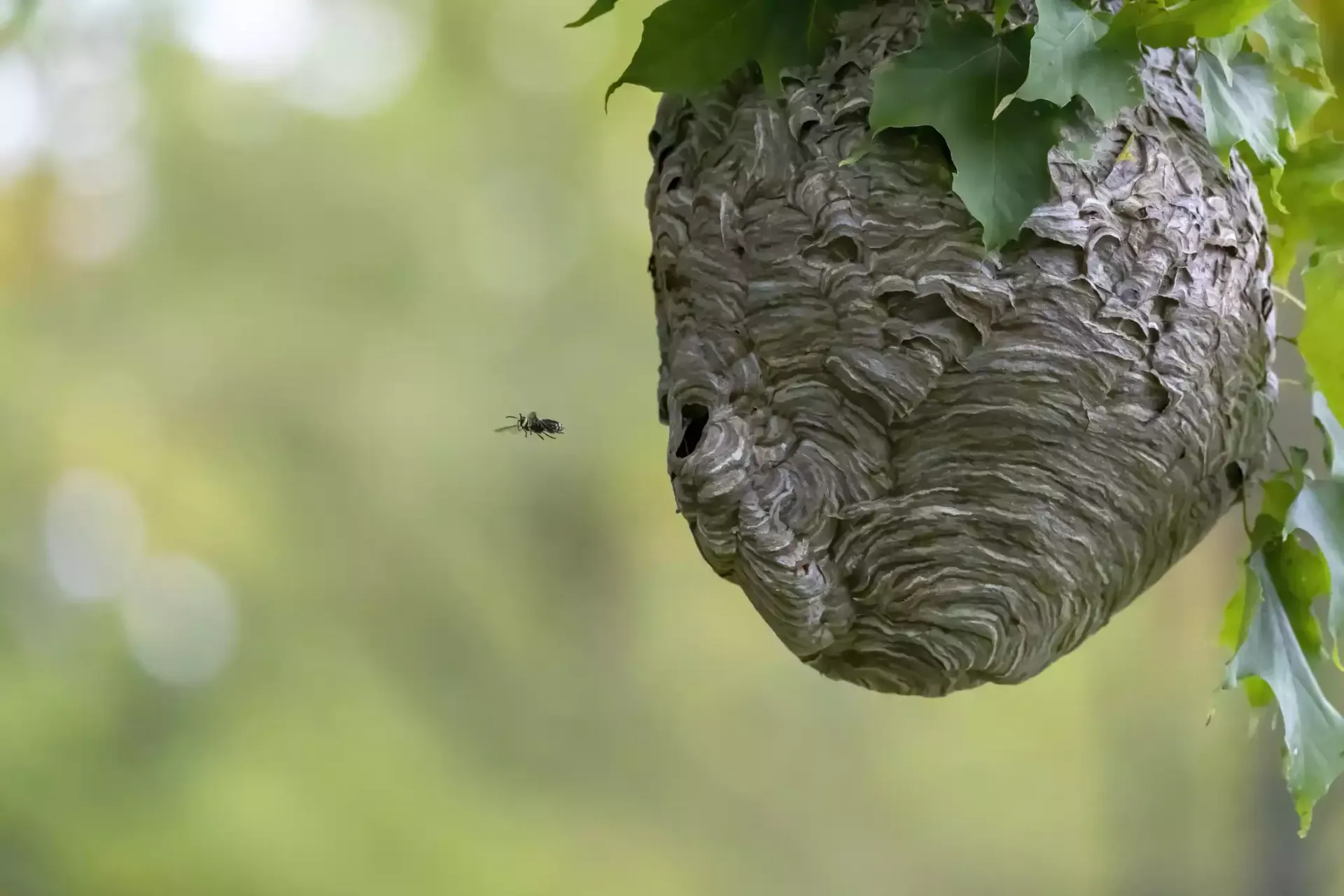
It's Bald-Faced Hornet Season in Columbus: What You Need to Know Summer in Columbus, Ohio means warm weather, backyard barbecues, and time spent outdoors with family and friends. But with the arrival of sunny days also comes an uptick in pest activity—especially from stinging insects like the bald-faced hornet. These aggressive pests pose real safety concerns for homeowners, businesses, and outdoor enthusiasts in the Columbus area. If you've noticed large, gray, papery nests high in trees, shrubs, or tucked under eaves, you're likely dealing with bald-faced hornets. Here are some tips from Restoration Pest Management , the experts in hornet removal in Columbus, to help keep you safe this summer. What Are Bald-Faced Hornets? Despite their name, bald-faced hornets are actually species of yellowjacket wasp . They are easily identifiable by their black bodies and distinct white markings on their faces and abdomens. These insects are significantly larger than most common wasps and are notorious for their aggressive nature when it comes to protecting their nests. Their aerial nests can house hundreds of workers, all ready to defend their colony. Bald-faced hornets are known to sting repeatedly and will chase perceived threats for long distances. This makes them particularly dangerous around homes, playgrounds, parks, and businesses, where people and pets are likely to come too close by accident. When Is Bald-Faced Hornet Season in Columbus? Bald-faced hornet activity in Columbus typically begins in late spring as queens emerge from hibernation to start new colonies. The real spike in activity occurs during the hot summer months, especially in July and August, when their populations swell and the nests grow rapidly. This is the time when residents are most likely to notice hornets flying in and out of their nests or hovering around outdoor spaces. During this peak season, bald-faced hornets become extremely territorial. A slight disturbance near their nest such as trimming a tree limb or mowing the lawn can provoke an attack. That’s why it’s critical to recognize the signs early and avoid triggering an aggressive response. Why Are Bald-Faced Hornets a Problem? Unlike bee species which can sting only once, bald-faced hornets can sting multiple times. Their venom is potent and can cause significant pain, swelling, and in some cases, severe allergic reactions. For people who are allergic to insect stings, even one encounter can be life-threatening. These hornets also tend to swarm when they feel threatened, making an accidental brush with a nest especially dangerous. Children and pets are at higher risk since they’re more likely to unknowingly disturb nests while playing outside. Businesses with outdoor seating or operations may also find that hornet activity drives away customers and creates safety liabilities. For these reasons, it’s important to treat bald-faced hornet infestations seriously. How to Handle a Bald-Faced Hornet Infestation in Columbus If you think bald-faced hornets are nesting near your property in Columbus, it’s essential to avoid tackling the problem yourself. DIY sprays or nest removal methods can be hazardous and are rarely effective in the long term. Professional pest control services have the tools, equipment, and training to safely remove nests and apply preventative treatments. At Restoration Pest Management, our trained technicians know exactly how to identify hornet nests, assess the level of infestation, and apply targeted solutions that eliminate the problem at its source. We prioritize safety and use environmentally responsible methods to protect both people and pets while ensuring the nest is fully neutralized. Protect Your Property with Professional Pest Control in Columbus Don’t let stinging insects ruin your summer. Restoration Pest Management provides prompt, effective bald-faced hornet removal services throughout the greater Columbus area, including nearby suburbs and rural properties. Our approach goes beyond just removal. We help identify risk factors around your home or business and offer solutions to reduce the likelihood of future infestations. Whether you're dealing with hornets, wasps, yellowjackets, or other summertime pests , our local team is here to help keep your outdoor spaces safe and comfortable. We’re proud to serve the Columbus, Ohio community with reliable, friendly service and proven pest control solutions. Don’t Wait—Call Restoration Pest Management Today Bald-faced hornet nests can expand quickly, increasing the chances of a dangerous encounter. The sooner you act, the easier and safer it is to remove the threat. Contact Restoration Pest Management now to schedule your inspection or treatment. We’re your go-to experts for pest control in Columbus, Ohio.
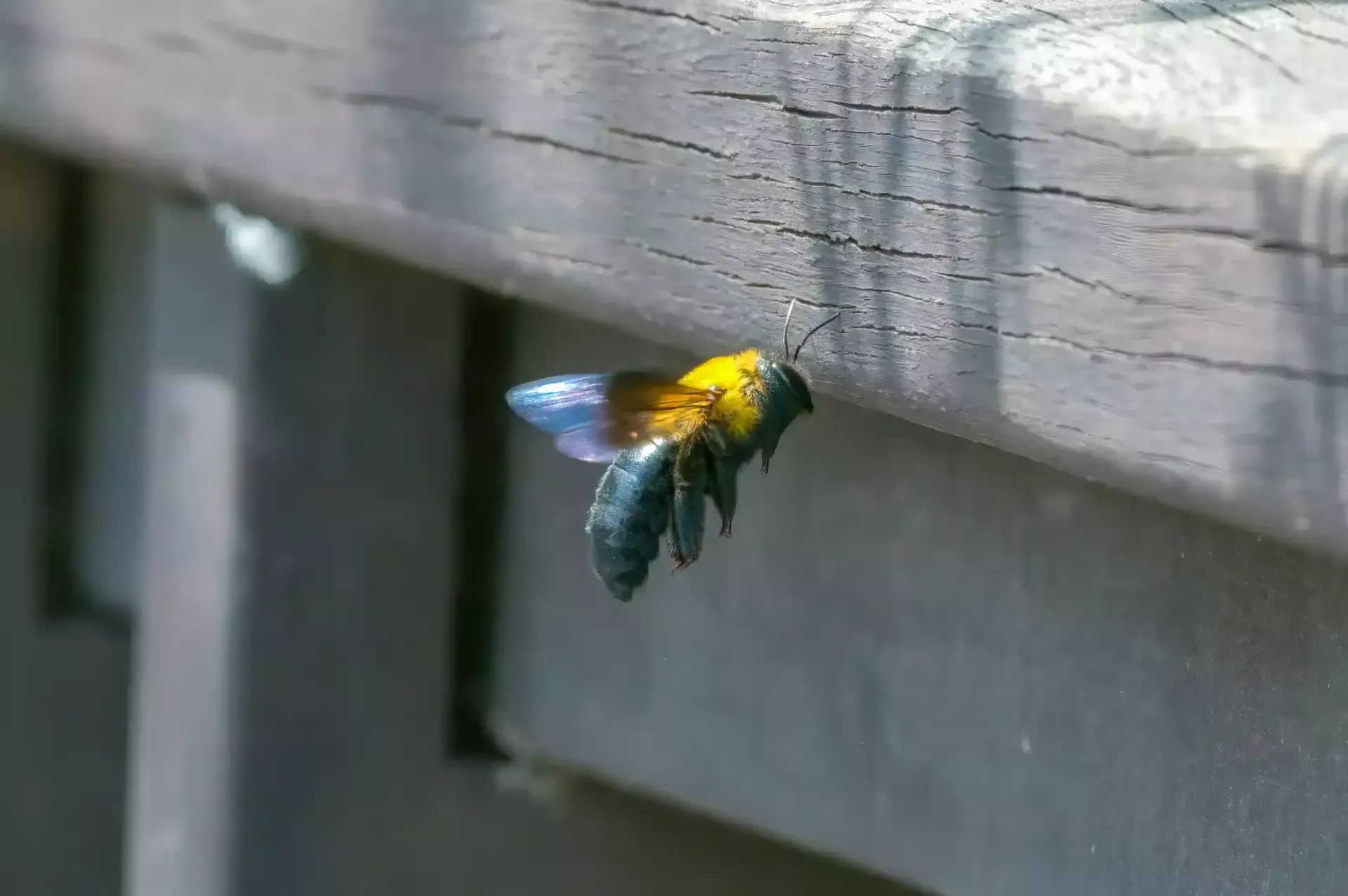
If you’ve started noticing small, round holes mysteriously appearing in your wood siding, carpenter bees could be to blame. These large, solitary insects may look similar to bumblebees , but their behavior and nesting habits can lead to serious problems for homeowners—especially in the spring and summer months. Unlike termites , carpenter bees don’t consume wood, but they do tunnel into it with precision and purpose, creating nests for their young. Over time, these tunnels can weaken wooden structures and leave your home vulnerable to more extensive damage. Here are tips for identifying carpenter bee infestation from Restoration Pest Management , your destination for carpenter bee removal in Columbus. What Do Carpenter Bee Holes Look Like? Carpenter bee entry holes are typically about the size of a dime—around ½ inch in diameter—and impressively round. They’re often located in protected areas like under eaves, around trim, and along wood siding, decks, and fences. You may also notice a small pile of a sawdust-like substance (called frass) underneath the hole, along with faint buzzing sounds coming from inside the wood. These signs strongly suggest carpenter bee activity. In many cases, the hole is just the beginning. After drilling a short, straight entry tunnel, the bee will make a right-angle turn to create a longer gallery running parallel to the wood grain. This tunnel becomes a nursery for laying eggs and can stretch for several inches—or even more if reused year after year. Why Do Carpenter Bees Choose Wood Siding? Carpenter bees are attracted to softwoods like pine, cedar, redwood, and cypress—especially when the wood is untreated, unpainted, or weather-worn. If your siding is older or has never been properly sealed or painted, it becomes a prime target for these buzzing invaders. They seek out dry, bare wood that offers easy access for boring tunnels and provides a secure environment for their young. Once carpenter bees establish a nest in your siding, they tend to return to the same area year after year—often expanding their tunnel networks or creating new ones nearby. This repeated activity significantly increases the risk of structural damage, staining, and other long-term issues. Are Carpenter Bees Dangerous? Carpenter bees aren’t aggressive like some stinging insects. Males can’t sting at all, and females typically only sting if they’re directly threatened. However, the true danger lies in the damage they cause to wooden structures. Over time, repeated tunneling weakens the boards and trim on your home, leading to: Soft or splintering wood Visible damage and unsightly holes Fungal growth or moisture buildup from compromised siding Increased risk of woodpecker activity, as they feed on the larvae inside the tunnels Woodpeckers can cause even more extensive damage than the bees themselves, pecking into siding in an attempt to reach the developing bee larvae inside. How to Tell If Carpenter Bees Are the Problem If you're trying to determine whether carpenter bees are causing the damage, keep an eye out for: Smooth, round holes on siding, trim, or eaves Small piles of sawdust or wood shavings beneath the holes Yellowish or brownish staining near entry points A few large bees hovering around or flying in and out of holes Audible buzzing from within wooden structures Carpenter bee infestations can sometimes go unnoticed until the damage becomes more severe. That’s why early detection is so important. If you suspect carpenter bees may be responsible for the holes in your siding, don't wait to get answers. Contact Restoration Pest Management for a professional inspection. Our experienced team can identify the source of the problem, assess the extent of any damage, and recommend the best course of action to protect your home. How to Stop Carpenter Bees While DIY efforts may seem appealing, the most effective and lasting way to deal with carpenter bees is through professional intervention. At Restoration Pest Management, we specialize in safely eliminating carpenter bee infestations and protecting your home from future issues. Our team uses targeted, environmentally conscious treatments that address the root of the problem—removing bees, sealing entry points, and advising on preventive strategies to keep them from coming back. Don't risk further damage to your home by ignoring the signs or attempting temporary fixes. Carpenter bees are persistent, and without proper removal and exclusion techniques, they often return year after year. It is important to keep up with consistent treatment throughout the season and year over year to break the bees’ lifecycles. Likewise, applying a good repellency chemical early in the season is the best way to deter activity. Don't Let Small Holes Turn Into Big Problems What may look like a few tiny holes today could turn into extensive (and expensive) damage. Carpenter bees are persistent and often return season after season, gradually enlarging their tunnel systems and reducing the strength of your siding or other wood features. If you suspect an infestation, it’s best to act quickly. The team at Restoration Pest Management is here to help. We offer thorough inspections, effective removal, and long-term solutions to protect your home from carpenter bees and other wood-destroying pests. If you’re noticing holes in your siding or wood trim, don’t wait. Contact Restoration Pest Management today to schedule an inspection and take the first step toward reclaiming your home from unwanted pests.
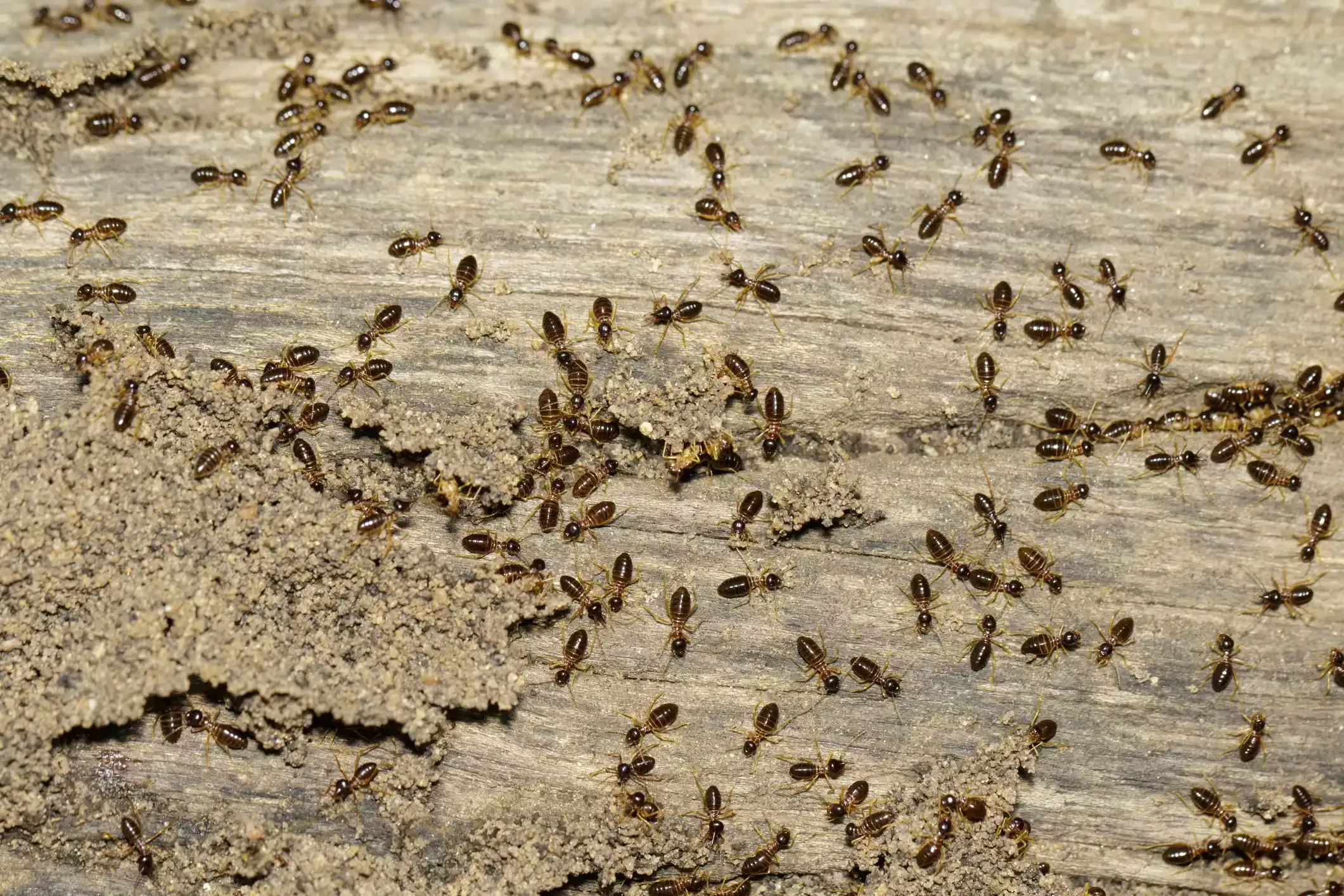
If you've noticed small, winged insects in or around your home or business, it's natural to feel alarmed. Your mind may immediately jump to pests like ants or termites , but determining which one you're dealing with can be a challenge. While both species can look remarkably similar—especially during their swarming phase—their behavior, appearance, and potential for damage vary greatly. Termites can be incredibly destructive to wooden structures, while ants are often more of a nuisance. This guide will help you learn how to tell the difference between ants and termites and what to do next if you suspect an infestation. Still not sure what to do? Contact Restoration Pest Management , your go-to for ant and termite extermination in Columbus. Appearance: Key Physical Differences Although ants and termites both fall under the category of small insects with six legs and antennae, there are a few visual clues that can help you quickly distinguish between the two: Waist Shape : One of the most noticeable features is the waist. Ants have a defined, pinched waist that gives their bodies an hourglass appearance. Termites, by contrast, have a more uniform, straight-sided body with no distinct narrowing at the waist. Antennae : Ants have elbowed or bent antennae, which are quite different from termites’ straight, beaded antennae. Wings : If you spot winged insects, take note of the wing shape and size. Ants’ front wings are longer than their back wings, and their wings are typically more angular. Termites, however, have two pairs of wings that are equal in size and extend well beyond the length of their bodies, giving them a more delicate, symmetrical appearance. Behavior and Habitat: Where and How They Live Understanding the habits and preferences of ants and termites can offer more clues: Ants are opportunistic foragers and are frequently seen trailing along surfaces as they search for food sources inside your home . They tend to nest in walls, under floors, in cracks, or in damp, decaying wood. Ants are especially active during warmer months and are usually more visible than termites. Termites , on the other hand, are secretive by nature. They thrive in dark, moist environments and prefer to stay hidden from view. Termites build colonies underground or inside the very structures they infest. A common external sign of termite presence is the appearance of mud tubes running along foundation walls or other wooden structures. These tubes provide moisture and protection as termites travel between their colony and food sources. Damage Signs: What to Watch For Damage caused by these pests can also help in identifying which insect is to blame: Termites feed directly on cellulose found in wood, paper, and other organic materials. Over time, their feeding can result in significant structural damage. Symptoms of a termite problem include hollow-sounding wood, blistering paint, sagging floors, stuck windows or doors, and small piles of wings left behind after a swarm. Ants , while usually less destructive, can still pose problems—especially carpenter ants. These ants don’t eat wood but will tunnel through it to create their nests. This can cause weakening of structural elements if left untreated, although it typically progresses more slowly than termite damage. Seasonal Activity and Swarming Both ants and termites experience a swarming season when young reproductive insects leave their nests to form new colonies. This is often when homeowners first notice an issue. Termite swarms usually occur after periods of rainfall, especially in the spring and early summer, when conditions are humid. Ant swarms are also common in the spring but tend to occur on warmer, sunny days, sometimes after rain. Because both pests swarm around the same time of year and in similar weather conditions, misidentification is common. Call a Professional for Peace of Mind Even with this information, it can still be difficult to confidently identify whether you're dealing with ants or termites—especially if you're seeing winged swarmers or only subtle signs of damage. That's where the experts come in. At Restoration Pest Management, our trained professionals are equipped with the experience and tools to determine the exact nature of your pest problem. Whether it's a minor ant infestation or a potentially serious termite issue, we’ll provide an effective, customized solution to protect your property and restore your peace of mind. Don't wait until the damage becomes worse. Contact Restoration Pest Management today for a thorough inspection, expert identification, and targeted treatment options that work.
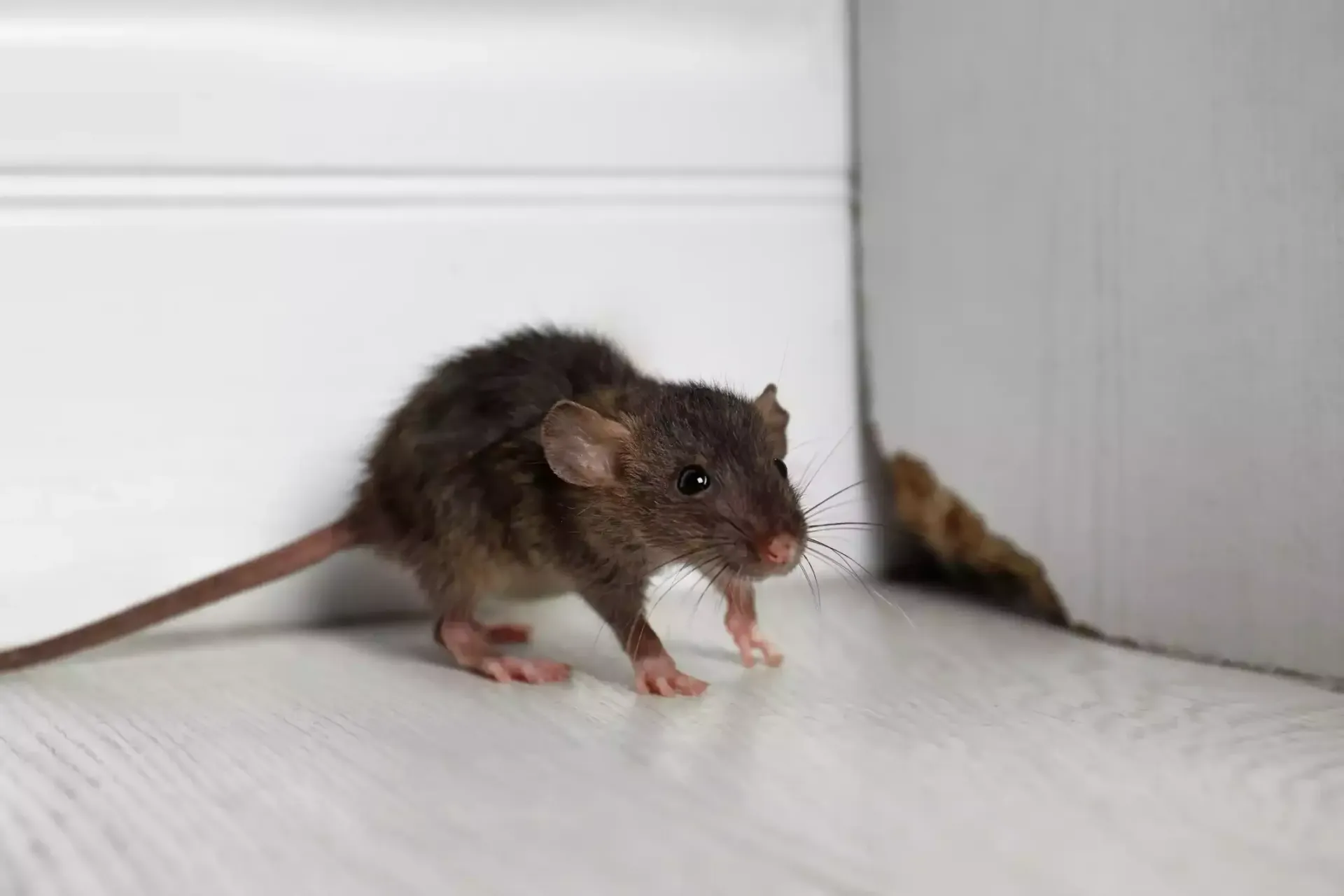
If you suspect mice in your home in Columbus, one of the first signs to look for is their droppings. Mouse poop is a key indicator of an infestation and can help you determine where these unwelcome guests are hiding. Understanding what mouse droppings look like, where to find them, and how to properly clean them up is crucial in keeping your home safe and pest-free. Mice are notorious for sneaking into homes, particularly during colder months, and their droppings are one of the most obvious clues to their presence. Identifying Mouse Droppings Mouse poop is small, dark, and pellet-shaped. A typical mouse dropping measures between 1/8 and 1/4 inch in length and has a spindle-like or rod-shaped appearance with pointed ends. The color of fresh droppings is usually dark brown to black, but as they age, they become lighter and may take on a grayish hue. Fresh droppings tend to be soft and moist, while older ones harden and become crumbly over time. If you find an accumulation of fresh mouse droppings, this indicates recent or ongoing rodent activity in your home. Identifying the freshness of droppings can help determine whether the infestation is still active or if the mice may have moved on. Where to Find Mouse Droppings in Your Home Since mice are nocturnal creatures that tend to stay hidden, you may not always see them, but their droppings provide clear evidence of their presence. Mouse poop is often found in areas where rodents search for food, build nests, and travel throughout the home . In kitchens and pantries, droppings are commonly discovered near food sources, inside cabinets, behind appliances, and along baseboards. Mice are drawn to dark, cluttered areas, making basements and garages prime locations to find droppings, particularly near storage boxes and along walls where they tend to run. In attics and crawl spaces, droppings may be found near insulation, around nesting materials, and near entry points where the mice have chewed their way in. Utility rooms, including spaces near water heaters, furnaces, and pipes, can also harbor mouse droppings, as these areas often provide warmth and shelter. The more widespread the droppings, the more severe the infestation is likely to be. Mouse Droppings vs. Other Pests Not all droppings found in your home belong to mice, so it's important to distinguish them from other common pest droppings. Rat droppings are significantly larger, measuring around 1/2 inch, and have blunt ends rather than the pointed shape of mouse droppings. Cockroach droppings, on the other hand, are much smaller and resemble coffee grounds or black pepper specks. Because they can often be mistaken for dirt or dust, careful inspection is necessary to identify them correctly. Squirrel droppings, another potential source of confusion, are rounder, larger than mouse droppings, and often found outdoors or in attics. Being able to differentiate between various types of pest droppings can help determine the best course of action for pest control. Health Risks of Mouse Poop Mouse droppings are more than just an unpleasant sight; they can pose health risks to you and your family in severe infestations. Mice are known carriers of bacteria, viruses, and parasites that can be transmitted through their feces. Most homes in Ohio at one point or another have had mice inside whether in living areas or attics. Being aware and taking precaution if mice are in your home is important to not allow an infestation to become severe. Severe infestations can lead to hantavirus, which is a respiratory illness contracted by inhaling infected rodent fecal matter. Although rodent fecal poses a threat of hantavirus, the likelihood of contracting this is low as, according to the CDC there are only about 35 cases reported every year in the U.S. In addition, mouse droppings can carry salmonella, which can contaminate food surfaces. Ensuring that countertops and areas where food and tableware are stored are cleaned and sanitized after rodent fecal is found is important to reducing the spread of rodent borne illness to humans. Given these risks, proper handling and disposal of mouse droppings are critical to maintaining a healthy home environment. What to Do If You Find Mouse Droppings Discovering mouse droppings in your Columbus home requires immediate attention to prevent the infestation from proliferating. Before cleaning up droppings, always wear protective gear such as gloves and a mask to avoid direct exposure. It is recommended to ventilate the area by opening windows to improve airflow and reduce airborne particles. To properly clean up mouse droppings, spray them with a disinfectant or a mixture of bleach and water before wiping them up. Never sweep or vacuum droppings, as this can cause harmful particles to become airborne. After cleaning, dispose of the droppings in a sealed plastic bag and immediately wash your hands thoroughly. Finding mouse droppings in your home is a sign of an active infestation requiring professional pest control services may to fully resolve the issue. Get Expert Mouse Control in Columbus, Ohio Finding mouse droppings in your home is a strong indication that rodents have taken up residence in your space. While DIY cleanup can help address the immediate problem, a professional pest control service can provide a comprehensive solution to eliminate the infestation and prevent future occurrences. At Restoration Pest Management, we specialize in effective rodent control in Columbus, Ohio. Our expert team will conduct a thorough inspection and implement customized treatment plans to eliminate mice from your home. Don't let a mouse problem compromise your family's health and safety. Contact us today for a free inspection and let us help you take back control of your home with reliable and effective pest management solutions.
